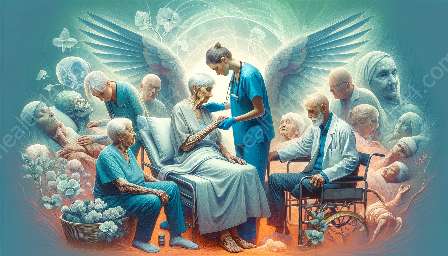As the field of geriatric medicine continues to evolve, advancements in technology and telemedicine are playing a crucial role in the delivery of healthcare services to elderly patients. This topic cluster aims to explore the impact of technology and telemedicine on geriatric healthcare, examining how these innovations are shaping the practice of geriatrics and the benefits they provide to the aging population.
Importance of Technology in Geriatric Healthcare
Geriatric medicine, also known as geriatrics, focuses on the healthcare needs of older adults. With the aging population growing rapidly, there is a pressing need for innovative approaches to address the unique challenges faced by elderly individuals. Technology has emerged as a powerful tool in improving the delivery of care and enhancing the quality of life for geriatric patients.
One of the key areas where technology has made a significant impact is in the management of chronic conditions prevalent among the elderly, such as diabetes, cardiovascular diseases, and arthritis. Wearable devices, smart sensors, and remote monitoring systems enable healthcare providers to track patients' vital signs, activity levels, and medication adherence in real time, leading to early detection of health issues and proactive intervention.
Furthermore, technology-supported communication platforms facilitate easy access to healthcare resources for older adults, particularly those with mobility limitations or living in remote areas. Telemedicine, in particular, has broken down barriers to healthcare access by allowing geriatric patients to consult with healthcare providers virtually, eliminating the challenges associated with traveling to medical facilities.
Telemedicine and Its Impact on Geriatric Care
Telemedicine, the use of digital communication technologies to deliver healthcare services remotely, has revolutionized the way geriatric care is provided. This approach has proven to be especially beneficial for elderly patients who may have difficulty traveling to medical appointments or require frequent follow-ups for chronic conditions.
Through telemedicine, geriatric patients can engage in virtual consultations with healthcare professionals, receive medical advice, and even participate in remote monitoring programs from the comfort of their homes. This not only ensures timely access to care but also promotes greater patient engagement and empowerment in managing their health.
Moreover, telemedicine has facilitated interdisciplinary collaboration among healthcare providers, enabling geriatric specialists, primary care physicians, and other professionals to coordinate and deliver comprehensive care plans for elderly patients. This level of coordinated care is essential in addressing the complex healthcare needs of older adults, particularly those with multiple chronic conditions and comorbidities.
Challenges and Opportunities in Integrating Technology into Geriatric Healthcare
While the potential of technology and telemedicine in geriatric healthcare is immense, there are various challenges that need to be addressed to ensure widespread adoption and effective implementation.
One significant challenge is the digital divide, wherein certain segments of the elderly population may face barriers in accessing or utilizing technology due to lack of digital literacy, financial constraints, or physical impairments. To overcome this obstacle, tailored educational programs and support services are necessary to enable older adults to embrace and benefit from technology-enabled healthcare solutions.
Furthermore, ensuring the privacy and security of geriatric patients' health information in the digital space is paramount. Robust data protection measures and adherence to regulatory guidelines are essential to safeguard sensitive medical data and maintain patient confidentiality in the context of telemedicine and remote monitoring.
Despite the challenges, the integration of technology into geriatric healthcare presents numerous opportunities for improving outcomes and enhancing the overall well-being of elderly patients. From virtual geriatric assessments and medication management tools to remote rehabilitation and telepsychiatry services, technological innovations continue to expand the scope of care available to the aging population.
Future Directions and Innovations
The future of technology in geriatric healthcare holds promise for further advancements and innovations that can address the evolving needs of older adults. As digital health technologies continue to evolve, personalized and precision medicine approaches tailored to geriatric patients' unique health profiles are likely to become more prevalent.
Artificial intelligence (AI) and machine learning algorithms are being developed to analyze geriatric patient data and predict health trends, enabling proactive interventions and personalized treatment plans. Additionally, virtual reality (VR) applications are emerging as therapeutic tools for pain management, cognitive training, and emotional well-being, offering new avenues for enhancing the holistic care of elderly individuals.
With ongoing research and development, the integration of technologies such as robotics, remote diagnostic tools, and ambient assisted living solutions is expected to further transform the landscape of geriatric medicine, empowering healthcare providers to deliver targeted, efficient, and compassionate care to the elderly population.
Conclusion
Technology and telemedicine are driving significant transformations in geriatric healthcare, offering new horizons for improving care delivery, disease management, and overall wellness for elderly patients. Embracing these advancements in geriatric medicine will not only address the unique healthcare needs of the aging population but also foster a future where aging is associated with vitality, dignity, and comprehensive support through innovative technological solutions.


